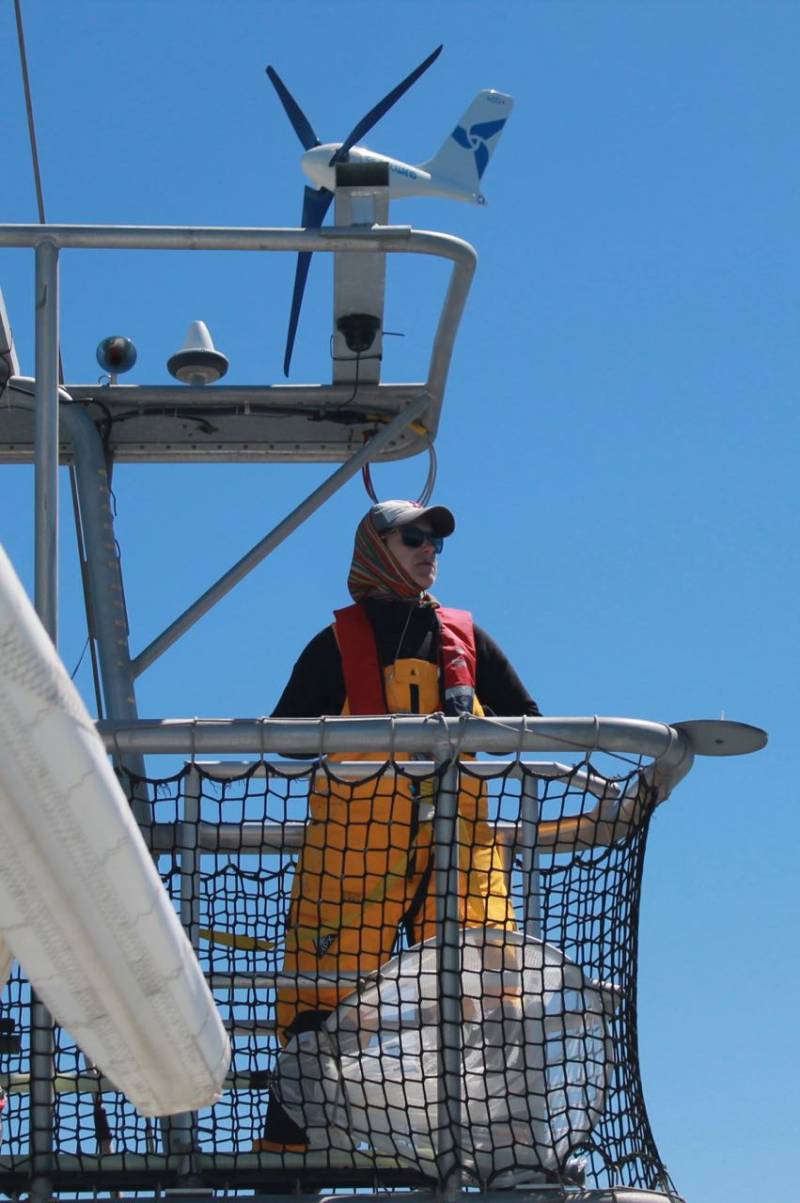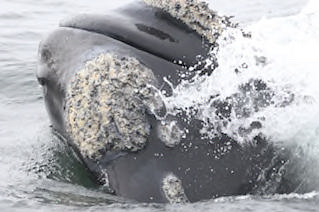SCIENCE IN THE SEA: Rolling, rolling, rolling
7 February, 2018
Whale ecologist Dr Jennifer Jackson, who is leading the first expedition to ‘health-check’ southern right whales since whaling stopped in the 1970s, describes how she and the team prepared for their expedition. Beginning with the journey from the Falklands.
It has taken us one week to get to South Georgia from the Falklands, and I am writing from King Edward Point, where we have just moored up. Our crossing was mostly in fine weather, with some great highlights including leaving the Falklands escorted by a crowd of bow-riding Peale’s and hourglass dolphins. We also had the some chances to test our equipment.
Out in the Sound just north of Stanley – The capital of the Falkland Islands – we did some equipment tests with the satellite tag projector, the Paxarm biopsy system tether line and the two drones. The Inspire 1 drone was not working correctly, so we plan to calibrate it on dry land at South Georgia to check all is in order before trying again from the boat.
During our research expedition, we take it in turns to look for whales from a raised platform at the stern end of the boat (the A-frame), also keeping an hourly record of the local weather conditions. Once underway, we put the hydrophone array out- to listen for whales and dolphins. One night the hydrophone detected pilot whales calling and whistling some distance away. Their whistling calls stayed with us through the night and into the early morning. We’ve also heard killer whales a few times, particularly on the approach to South Georgia.

Keen to find out what the large whales are doing, we have dropped a couple of sonobuoys into the water. Each time, we have detected the distinctive 26 Hertz call of the Antarctic blue whale. This is very good news, as it means our acoustic equipment is working. However, it doesn’t necessarily mean these blue whales are close as blue whale sounds travel huge distances and these calls could be from as far away as the ice edge. We heard a fin whale call once, but no humpback or right whales on the crossing. We’re not sure how much right whales will be vocalising on their South Georgia feeding grounds but we hope to find out soon.
We only saw two whales on the crossing from Stanley to the Falklands and were hoping to find some when we arrived at Shag Rocks, a spot one day’s sail west of South Georgia where whales have been regularly sighted in the last few years. However, Shag Rocks is notorious for having terrible weather and our visit was no exception- we were greeted by mist and swell and raced on through towards South Georgia. We met bright but stormy seas as we entered the shallow waters, and were despondent to find no whales at all. Thinking back to the ~171,000 whales killed here in the last century, combined with their long generation times and slow growth rates, perhaps we shouldn’t be surprised. We went to bed fearing the worst for our trip.
Monday dawned on the north coast of the Island, and with it finally some whales! From dawn to late morning we were surrounded by whales, firstly humpbacks and later right whales. At one point, even a dwarf minke whale came and circled the boat. While we were photographing the right whales, Susie and Russell captured some gunshot sounds underwater which are probably their vocalisations. It was the best possible welcome to South Georgia and gives us great hope that the right whales are coming back, and that we can fulfil the hopes and aims of our expedition.

Find out more about the project here.